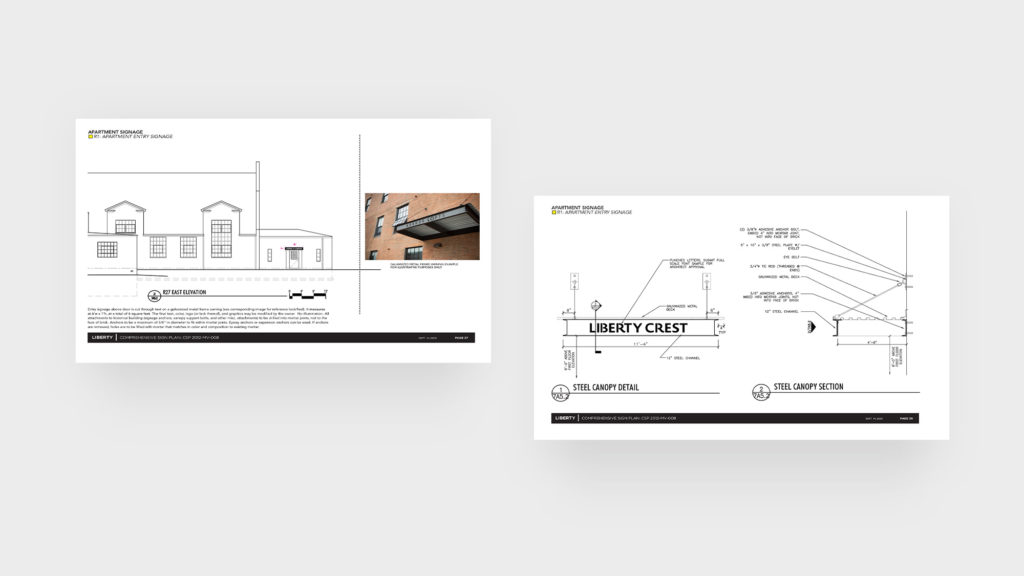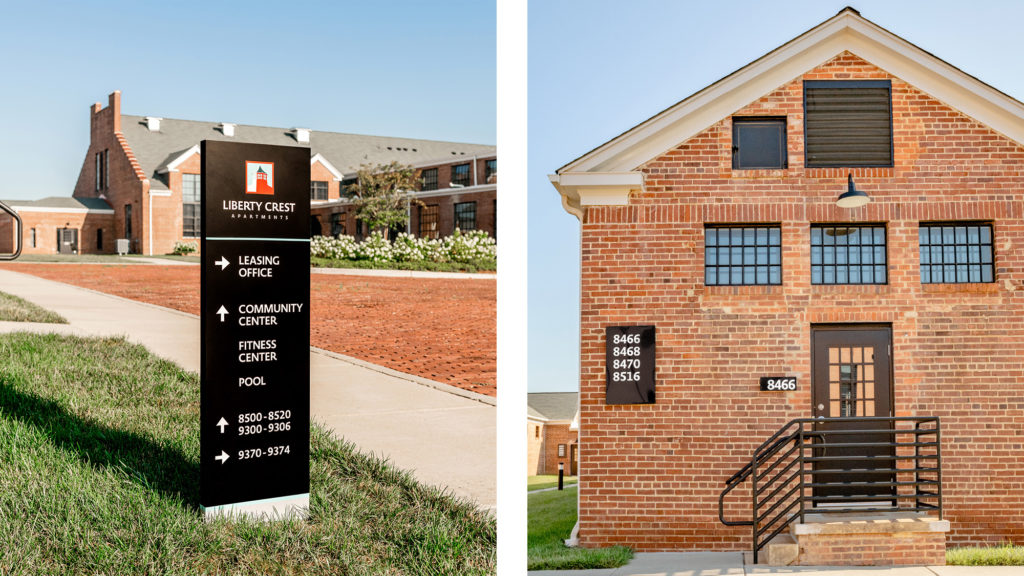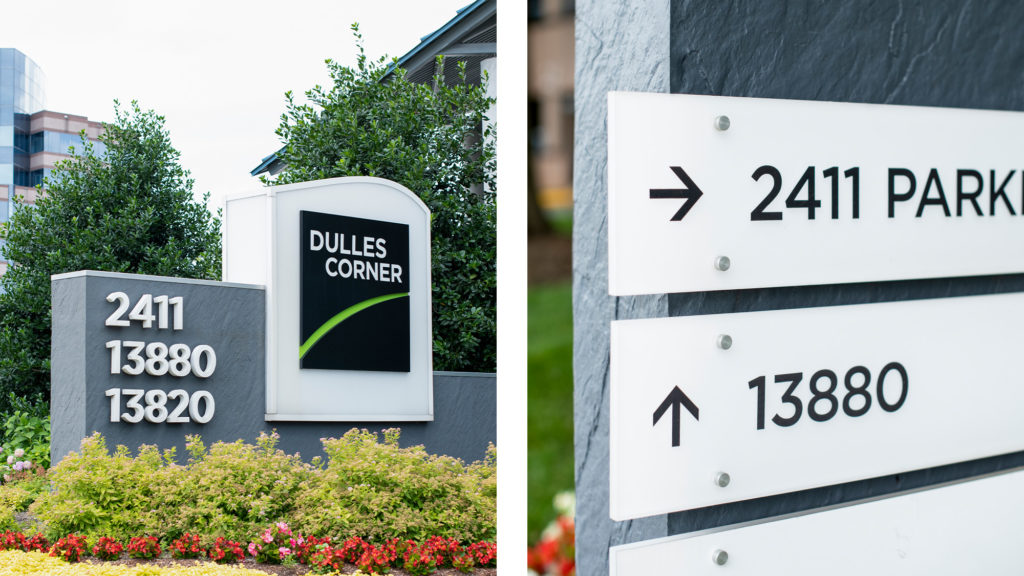Over the course of my years of experience as an architectural signage consultant, my clients in commercial real estate, whether property managers, developers or land owners, often ask when they should pursue the development of a Comprehensive Sign Plan (CSP) for their property.
I have found that there are five key factors for consideration that can make answering this question easier.
What is a CSP?
Firstly, it is important to understand what a CSP is and what it does. A Comprehensive Sign Plan is a coordinated proposal that demonstrates and outlines all signs appropriated for a parcel based on the characteristics and special requirements of that property. CSPs articulate the design and general construction specifications of planned signage including their size, location and quantity. Detailed documentation and written justification from experts is also required as the CSP becomes the regulatory document for obtaining all permits for that property, replacing the zoning ordinance article that outlines typical signage rules and regulations.
What to consider when determining if a CSP is right for your property?
Before weighing all options, review your zoning designation. For example, in Fairfax County, Virginia, a CSP can only be developed for any Planned—P zoning districts (PDC, PTC, PDH, PRC, PRM) and are not permitted for any other designations (R, C or I). If your property falls into one of the above planned districts, consider these five rules of thumb:
- Your property requires more signage than the zoning ordinance allows, both in size and quantity. The zoning ordinance parameters for size and quantity of signage are typically generalized. Certain unique property types (such as mixed-use, those with more than one building or very unique architectural features) may require more flexible or customized signage programming options that a CSP can provide.
- Your property includes a building (or buildings) that require additional allowable area for building mounted tenant signs. Oftentimes, such as when your property is located next to a major thoroughfare, you may be interested in more building mounted signs than the Maximum Allowable Sign Area (MASA) allows. CSPs, when developed in collaboration with a qualified land-use attorney, can include justification to successfully add to a building’s MASA (in some cases, by even two times).

- Your property would benefit from the inclusion of special features for placemaking such as leveraging unique design elements in the form of branded sculptures or exhibits. Art features that are not specifically related to a brand in color or text do not typically require a permit, but it’s often the case that special placemaking features must include features or typography that give a property a sense of brand identity. These types of special features typically require a CSP for permit and installation.
- Your property is so expansive that it requires a highly coordinated and sophisticated design plan for all signs on the property. While you could achieve this without a CSP, it would require constant review and oversight from property management. By submitting a CSP, you can ensure that all signs on your property fit together in a consistent program and you can receive clearance on all signs at once.

- Your property is on the National Register of Historic Places and signage must coordinate with a very unique set of characteristics. Historic places often include special considerations (preserved and original features, walls or materials) that make the implementation of signage and wayfinding incredibly challenging. Developing and submitting a CSP enables you to coordinate those details simultaneously and sensitively in one organized document.
